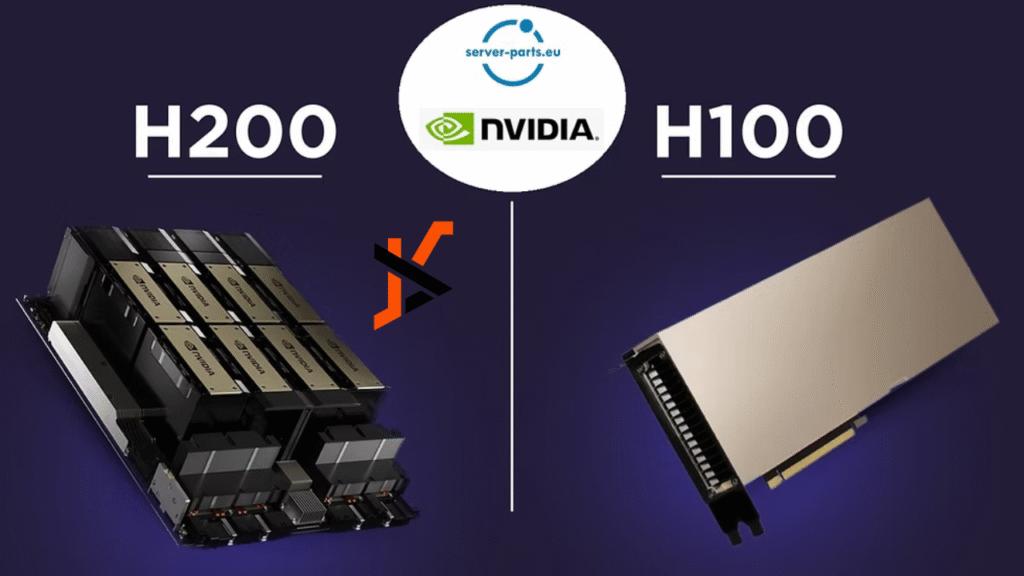As the demand for large language models (LLMs) continues to skyrocket, so too does the need for high-performance hardware to power them efficiently. From generative AI applications to enterprise-scale deployments, inference speed and cost-effectiveness are critical factors that define success.
NVIDIA’s H200 GPU has quickly emerged as one of the most powerful accelerators purpose-built for LLM workloads. Below, we explore seven key advantages of the h200 gpu for large language model inference and why it represents a major leap forward in AI infrastructure.
Breakthrough Memory Bandwidth
One of the most significant bottlenecks in LLM inference is memory access. The NVIDIA H200 comes with HBM3e (High Bandwidth Memory), delivering up to 4.8 TB/s of bandwidth. This represents a dramatic leap over previous generations and enables models to fetch parameters and embeddings much faster.
For large-scale transformers with billions of parameters, this high bandwidth ensures smooth execution without memory stalls, leading to faster token generation and more consistent throughput.
Expanded Memory Capacity for Bigger Models
The H200 GPU offers 141GB of HBM3e memory, giving developers the ability to fit larger models directly into a single GPU.
This is crucial for inference, where running a model without sharding across multiple devices reduces latency and system complexity. Enterprises working with models like GPT-style transformers or domain-specific LLMs can deploy them more efficiently without worrying about excessive partitioning.
Optimised for Transformer Architectures
Modern AI workloads overwhelmingly rely on transformer-based architectures. The H200 GPU has been specifically optimised for these models, providing accelerated attention mechanisms and faster matrix multiplications, the backbone of LLM computation.
This specialisation ensures that developers see a significant performance boost compared to general-purpose GPUs when deploying language models at scale.
Lower Latency for Real-Time Applications
In LLM-powered applications—such as chatbots, copilots, or recommendation systems—low latency is a necessity. Thanks to its higher throughput and optimised tensor cores, the H200 reduces time-to-first-token and accelerates overall generation speed.
This improvement means users experience more fluid interactions with AI systems, an essential factor in customer-facing solutions where responsiveness directly impacts user satisfaction.
Superior Energy Efficiency
Running massive AI workloads is not only computationally demanding but also energy-intensive. The H200 has been designed with improved performance-per-watt, allowing data centres to achieve greater inference throughput without exponential increases in energy costs. For enterprises focused on sustainable AI deployment, the H200 offers both economic and environmental advantages.
Seamless Integration with the NVIDIA AI Ecosystem
The H200 is fully compatible with NVIDIA’s AI software stack, including TensorRT-LLM, NeMo, and CUDA libraries. This integration makes it easier for teams to deploy LLMs without re-engineering their infrastructure. Developers can leverage optimised kernels and prebuilt inference pipelines, shortening time to market while ensuring they get maximum performance out of the hardware.
Scalability Across Data Centre Deployments
Finally, the H200 is designed for hyperscale deployment. Whether you are running a single-node inference server or an entire AI supercluster, the GPU integrates seamlessly into multi-GPU systems with NVLink and NVSwitch support. This scalability ensures that as models grow in complexity and organisations scale their AI offerings, the H200 can grow alongside them—delivering consistent, predictable performance.
Conclusion
The NVIDIA H200 GPU represents a transformative step for organisations deploying large language models at scale. With unmatched memory bandwidth, higher capacity, transformer-specific optimisations, and strong energy efficiency, it is purpose-built for the challenges of LLM inference. Companies looking to improve latency, cut infrastructure costs, and scale sustainably will find the H200 to be a cornerstone of next-generation AI infrastructure.
In short, if your business relies on fast, reliable, and scalable LLM inference, the NVIDIA H200 is more than an upgrade—it’s a competitive advantage.

